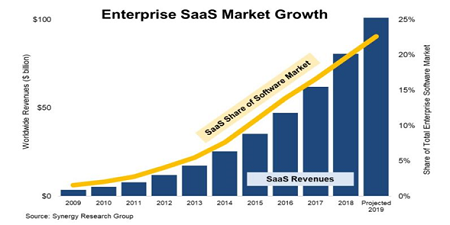You are here:
You are here
Seeking Alpha News
- Genetic Technologies stock tumbles on direct offering pricing
- TG Therapeutics wins VA contract for Briumvi
- Societe Generale: A Good Deal Below 0.4x Tangible Book Value
- Eaton Vance's ETY Is The Cream Of The Option-Income CEF Crop
- Nasdaq, S&P, Dow look for direction after giving up earlier gains; Netflix after the bell
TalkMarkets
Blog Archive
- April 2024 (1)
- March 2024 (1)
- January 2024 (2)
- December 2023 (1)
- November 2023 (1)
- October 2023 (1)
- September 2023 (2)
- August 2023 (1)
- June 2023 (2)
- May 2023 (2)
- April 2023 (1)
- March 2023 (1)
- February 2023 (1)
- January 2023 (1)
- November 2022 (1)
- October 2022 (2)
- August 2022 (3)
- June 2022 (1)
- May 2022 (2)
- March 2022 (1)
- February 2022 (2)
- January 2022 (2)
- December 2021 (1)
- October 2021 (1)
- September 2021 (1)
- July 2021 (3)
- June 2021 (1)
- April 2021 (1)
- March 2021 (1)
- February 2021 (1)
- January 2021 (1)
- December 2020 (1)
- November 2020 (3)
- October 2020 (1)
- September 2020 (1)
- August 2020 (1)
- July 2020 (3)
- June 2020 (1)
- May 2020 (2)
- April 2020 (2)
- March 2020 (2)
- February 2020 (1)
- January 2020 (2)
- December 2019 (2)
- November 2019 (1)
- October 2019 (2)
- September 2019 (1)
- August 2019 (1)
- July 2019 (2)
- June 2019 (1)
- May 2019 (1)
- April 2019 (1)
- March 2019 (1)
- February 2019 (1)
- January 2019 (1)
- December 2018 (1)
- November 2018 (1)
- October 2018 (2)
- September 2018 (1)
- August 2018 (1)
- July 2018 (2)
- June 2018 (1)
- May 2018 (1)
- April 2018 (1)
- March 2018 (1)
- February 2018 (1)
- January 2018 (1)
- December 2017 (1)
- November 2017 (1)
- October 2017 (2)
- September 2017 (2)
- August 2017 (1)
- July 2017 (1)
- June 2017 (1)
- May 2017 (1)
- April 2017 (2)
- March 2017 (2)
- February 2017 (2)
- January 2017 (2)
- December 2016 (1)
- November 2016 (2)
- October 2016 (2)
- September 2016 (2)
- August 2016 (1)
- July 2016 (3)
- June 2016 (2)
- May 2016 (2)
- April 2016 (2)
- March 2016 (2)
- February 2016 (2)
- January 2016 (2)
- December 2015 (2)
- November 2015 (2)
- October 2015 (3)
- September 2015 (2)
- August 2015 (3)
- July 2015 (3)
- June 2015 (2)
- May 2015 (3)
- April 2015 (3)
- March 2015 (4)
- February 2015 (4)
- January 2015 (4)
- December 2014 (3)
- November 2014 (4)
- October 2014 (4)
- September 2014 (5)
- August 2014 (5)
- July 2014 (5)
- June 2014 (4)
- May 2014 (4)
- April 2014 (6)
- March 2014 (9)
- February 2014 (7)
- January 2014 (7)
- December 2013 (6)
- November 2013 (7)
- October 2013 (11)
- September 2013 (10)
- August 2013 (6)
- July 2013 (10)
- June 2013 (7)
- May 2013 (9)
- April 2013 (9)
- March 2013 (8)
- February 2013 (9)
- January 2013 (8)
- December 2012 (8)
- November 2012 (9)
- October 2012 (11)
- September 2012 (10)
- August 2012 (9)
- July 2012 (9)
- June 2012 (8)
- May 2012 (8)
- April 2012 (9)
- March 2012 (8)
- February 2012 (8)
- January 2012 (9)
- December 2011 (9)
- November 2011 (8)
- October 2011 (9)
- September 2011 (9)
- August 2011 (11)
- July 2011 (9)
- June 2011 (9)
- May 2011 (11)
- April 2011 (12)
- March 2011 (15)
- February 2011 (8)
- January 2011 (12)
- December 2010 (11)
- November 2010 (9)
- October 2010 (8)
- September 2010 (7)
- August 2010 (24)
- July 2010 (8)
- June 2010 (11)
- May 2010 (8)
- April 2010 (8)
- March 2010 (11)
- February 2010 (10)
- January 2010 (15)
- December 2009 (10)
- November 2009 (11)
- October 2009 (8)
- September 2009 (10)
- August 2009 (7)

 by Scott Martindale
by Scott Martindale by Bradley Cipriano, CPA
by Bradley Cipriano, CPA by Ian Striplin
by Ian Striplin by Rachel Annis
by Rachel Annis